Potency of Hexaconazole to Disrupt Endocrine Function with Sex Hormone-Binding Globulin
Abstract
:1. Introduction
2. Results
2.1. SHBG Molecular Interaction Pattern
2.2. Trajectories Analyses of MD Simulation
2.3. Molecular Mechanics of the Poisson–Boltzmann Surface Area (MM-PBSA)
2.4. ADME and Toxicity Analyses
3. Discussion
4. Materials and Methods
4.1. Preparation of the Structure and Molecular Docking
4.2. Molecular Dynamics (MD) Simulation Analyses
4.3. Analyses of Trajectory
4.4. Principal Component Analysis (PCA)
4.5. Molecular Mechanics of the Poisson–Boltzmann Surface Area (MM-PBSA)
4.6. ADME and Toxicity Analyses
5. Conclusions
Supplementary Materials
Funding
Institutional Review Board Statement
Informed Consent Statement
Data Availability Statement
Conflicts of Interest
References
- PubChem [Internet]. Bethesda (MD): National Library of Medicine (US), National Center for Biotechnology Information. Available online: https://pubchem.ncbi.nlm.nih.gov/ (accessed on 11 December 2022).
- Kojima, H.; Katsura, E.; Takeuchi, S.; Niiyama, K.; Kobayashi, K. Screening for Estrogen and Androgen Receptor Activities in 200 Pesticides by in Vitro Reporter Gene Assays Using Chinese Hamster Ovary Cells. Environ. Health Perspect. 2004, 112, 524–531. [Google Scholar] [CrossRef] [PubMed] [Green Version]
- Yu, L.; Chen, M.; Liu, Y.; Gui, W.; Zhu, G. Thyroid Endocrine Disruption in Zebrafish Larvae Following Exposure to Hexaconazole and Tebuconazole. Aquat. Toxicol. 2013, 138–139, 35–42. [Google Scholar] [CrossRef] [PubMed] [Green Version]
- Lv, X.; Pan, L.; Wang, J.; Lu, L.; Yan, W.; Zhu, Y.; Xu, Y.; Guo, M.; Zhuang, S. Effects of Triazole Fungicides on Androgenic Disruption and CYP3A4 Enzyme Activity. Environ. Pollut. 2017, 222, 504–512. [Google Scholar] [CrossRef] [PubMed]
- Abdi, S.A.H.; Alzahrani, A.; Alghamdi, S.; Alquraini, A.; Alghamdi, A. Hexaconazole Exposure Ravages Biosynthesis Pathway of Steroid Hormones: Revealed by Molecular Dynamics and Interaction. Toxicol. Res. 2022, 11, 60–76. [Google Scholar] [CrossRef] [PubMed]
- Taxvig, C.; Hass, U.; Axelstad, M.; Dalgaard, M.; Boberg, J.; Andeasen, H.R.; Vinggaard, A.M. Endocrine-Disrupting Activities In Vivo of the Fungicides Tebuconazole and Epoxiconazole. Toxicol. Sci. 2007, 100, 464–473. [Google Scholar] [CrossRef] [PubMed] [Green Version]
- Draskau, M.K.; Svingen, T. Azole Fungicides and Their Endocrine Disrupting Properties: Perspectives on Sex Hormone-Dependent Reproductive Development. Front. Toxicol. 2022, 4, 883254. [Google Scholar] [CrossRef] [PubMed]
- Sheikh, I.A.; Yasir, M.; Abu-Elmagd, M.; Dar, T.A.; Abuzenadah, A.M.; Damanhouri, G.A.; Al-Qahtani, M.; Beg, M.A. Human Sex Hormone-Binding Globulin as a Potential Target of Alternate Plasticizers: An in Silico Study. BMC Struct. Biol. 2016, 16, 15. [Google Scholar] [CrossRef] [PubMed] [Green Version]
- Shah, W.; Khan, R.; Shah, B.; Khan, A.; Dil, S.; Liu, W.; Wen, J.; Jiang, X. The Molecular Mechanism of Sex Hormones on Sertoli Cell Development and Proliferation. Front. Endocrinol. 2021, 12, 648141. [Google Scholar] [CrossRef]
- Abdi, S.A.H.; Ali, A.; Fatma Sayed, S.; Ali, A.; Shabee Hulhasan Abadi, S.; Tahir, A.; Afjal, M.A.; Rashid, H.; Aly, O.M.; Nagarajan, S. Potential of Paracetamol for Reproductive Disruption: Molecular Interaction, Dynamics, and MM-PBSA Based in-Silico Assessment. Toxicol. Mech. Methods 2022, 1–15. [Google Scholar] [CrossRef] [PubMed]
- Abdi, S.A.H.; Ali, A.; Sayed, S.F.; Ahsan, M.J.; Tahir, A.; Ahmad, W.; Shukla, S.; Ali, A. Morusflavone, a New Therapeutic Candidate for Prostate Cancer by CYP17A1 Inhibition: Exhibited by Molecular Docking and Dynamics Simulation. Plants 2021, 10, 1912. [Google Scholar] [CrossRef] [PubMed]
- Abdi, S.A.H.; Alzahrani, A.; Asad, M.; Alquraini, A.; Alghamdi, A.I.; Sayed, S.F. Molecular Docking and Dynamics Simulation to Screen Interactive Potency and Stability of Fungicide Tebuconazole with Thyroid and Sex Hormone-binding Globulin: Implications of Endocrine and Reproductive Interruptions. J. Appl. Toxicol. 2021, 41, 1649–1659. [Google Scholar] [CrossRef] [PubMed]
- Thirumal Kumar, D.; Lavanya, P.; George Priya Doss, C.; Tayubi, I.A.; Naveen Kumar, D.R.; Francis Yesurajan, I.; Siva, R.; Balaji, V. A Molecular Docking and Dynamics Approach to Screen Potent Inhibitors Against Fosfomycin Resistant Enzyme in Clinical Klebsiella Pneumoniae. J. Cell. Biochem. 2017, 118, 4088–4094. [Google Scholar] [CrossRef] [PubMed]
- Liu, T.; Fang, K.; Liu, Y.; Zhang, X.; Han, L.; Wang, X. Enantioselective Residues and Toxicity Effects of the Chiral Triazole Fungicide Hexaconazole in Earthworms (Eisenia Fetida). Environ. Pollut. 2021, 270, 116269. [Google Scholar] [CrossRef] [PubMed]
- Maisuradze, G.G.; Liwo, A.; Scheraga, H.A. Principal Component Analysis for Protein Folding Dynamics. J. Mol. Biol. 2009, 385, 312–329. [Google Scholar] [CrossRef] [PubMed] [Green Version]
- Wanga, Y.; Zhua, W.; Qiub, J. Monitoring tryptophan metabolism after exposure to hexaconazole and the enantioselective metabolism of hexaconazole in rat hepatocytes in vitro. J. Hazard. Mater. 2015, 295, 9–16. [Google Scholar] [CrossRef] [PubMed]
- Hammond, G.L. Sex Hormone-Binding Globulin and the Metabolic Syndrome. In Male Hypogonadism; Springer International Publishing: Cham, Switzerland, 2017; pp. 305–324. [Google Scholar]
- Morris, G.M.; Goodsell, D.S.; Halliday, R.S.; Huey, R.; Hart, W.E.; Belew, R.K.; Olson, A.J. Automated Docking Using a Lamarckian Genetic Algorithm and an Empirical Binding Free Energy Function. J. Comput. Chem. 1998, 19, 1639–1662. [Google Scholar] [CrossRef]
- Forli, S.; Huey, R.; Pique, M.E.; Sanner, M.F.; Goodsell, D.S.; Olson, A.J. Computational Protein–Ligand Docking and Virtual Drug Screening with the AutoDock Suite. Nat. Protoc. 2016, 11, 905–919. [Google Scholar] [CrossRef] [PubMed] [Green Version]
- Bjelkmar, P.; Larsson, P.; Cuendet, M.A.; Hess, B.; Lindahl, E. Implementation of the CHARMM Force Field in GROMACS: Analysis of Protein Stability Effects from Correction Maps, Virtual Interaction Sites, and Water Models. J. Chem. Theory Comput. 2010, 6, 459–466. [Google Scholar] [CrossRef] [PubMed]
- Lee, H.-C.; Hsu, W.-C.; Liu, A.-L.; Hsu, C.-J.; Sun, Y.-C. Using Thermodynamic Integration MD Simulation to Compute Relative Protein–Ligand Binding Free Energy of a GSK3β Kinase Inhibitor and Its Analogs. J. Mol. Graph. Model. 2014, 51, 37–49. [Google Scholar] [CrossRef] [PubMed]
- Christopher, B.; Tharindu, S.; Simon, B. Analysis of Molecular Dynamics Simulations (Galaxy Training Materials). 2020. Available online: https://training.galaxyproject.org/training-material/topics/computational-chemistry/tutorials/analysis-md-simulations/tutorial.html (accessed on 6 January 2023).
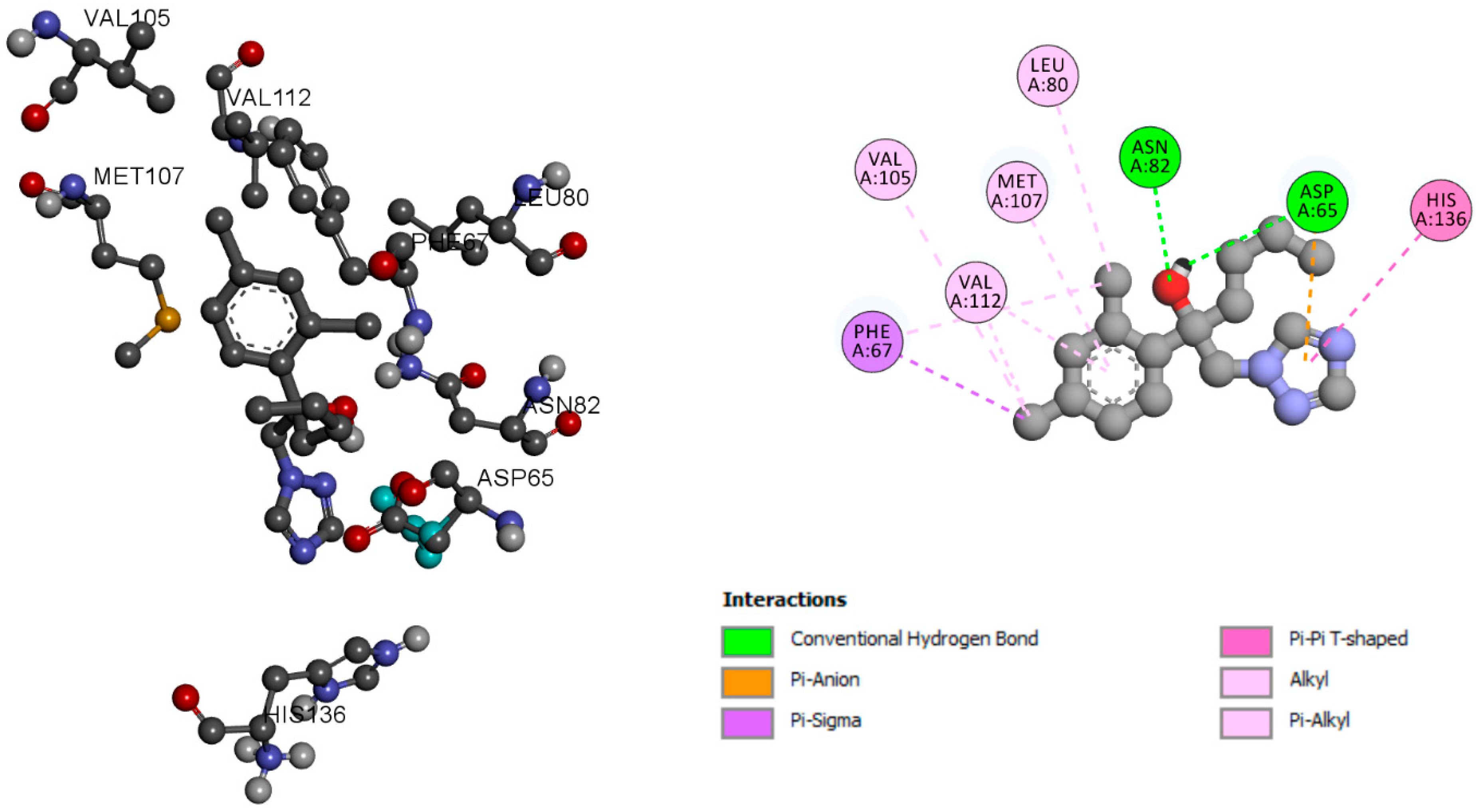
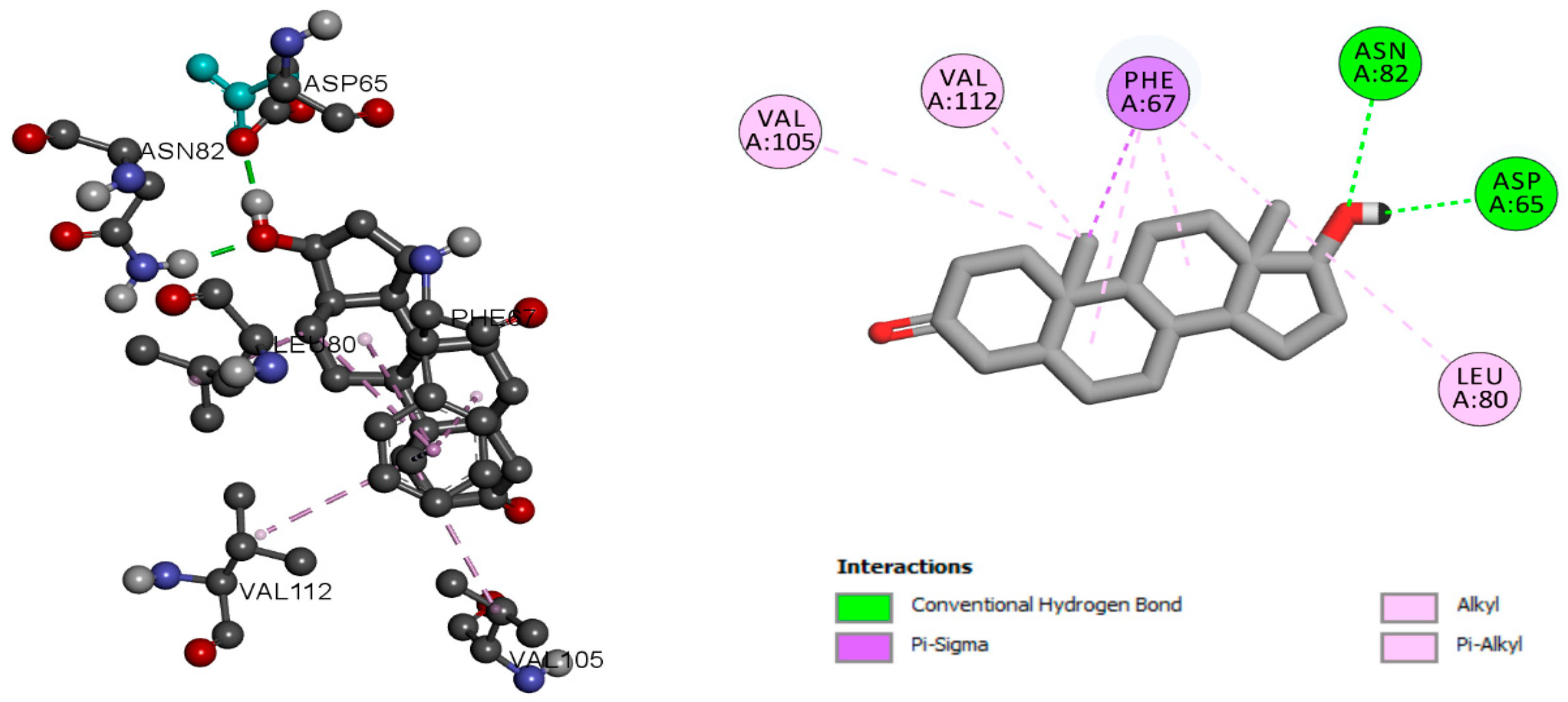
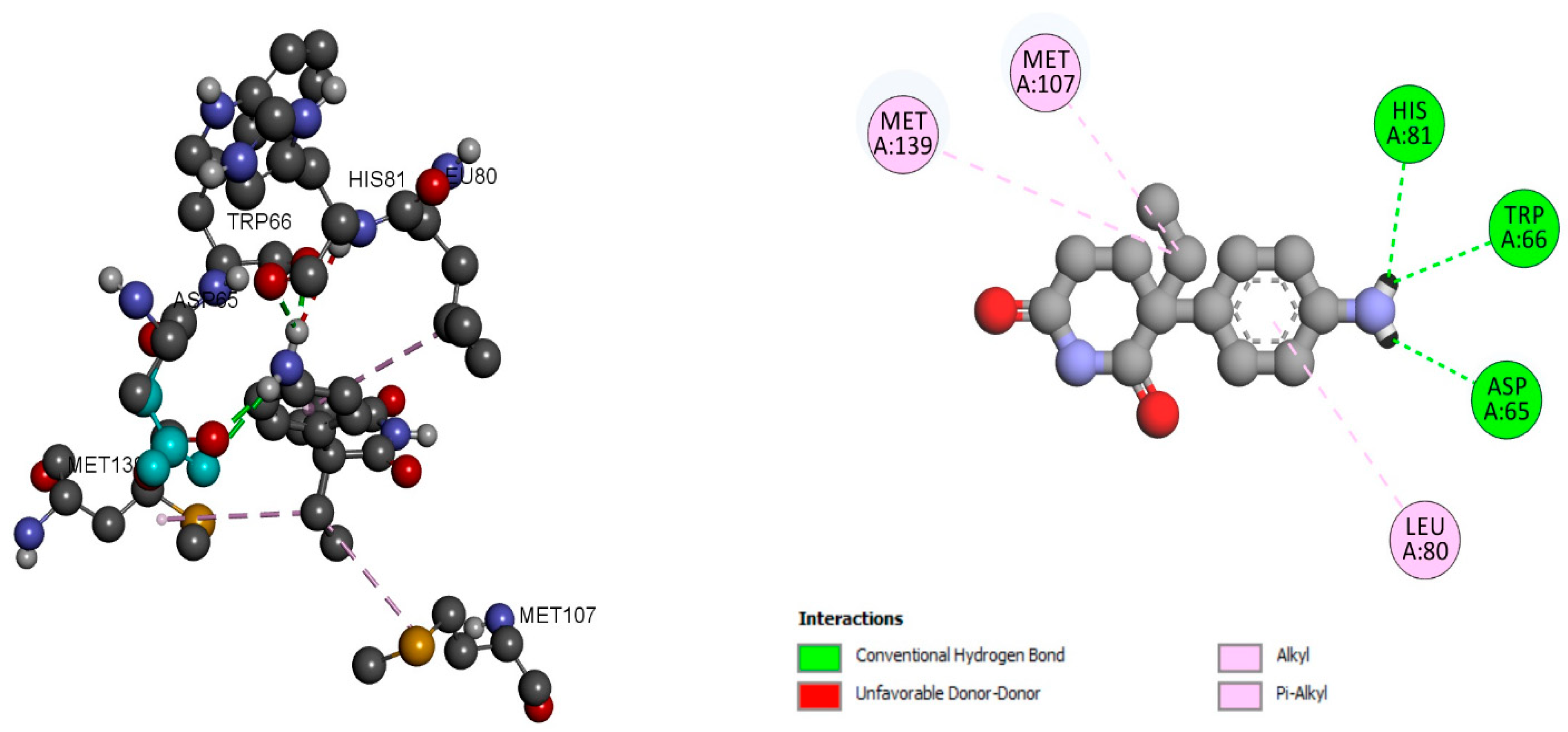
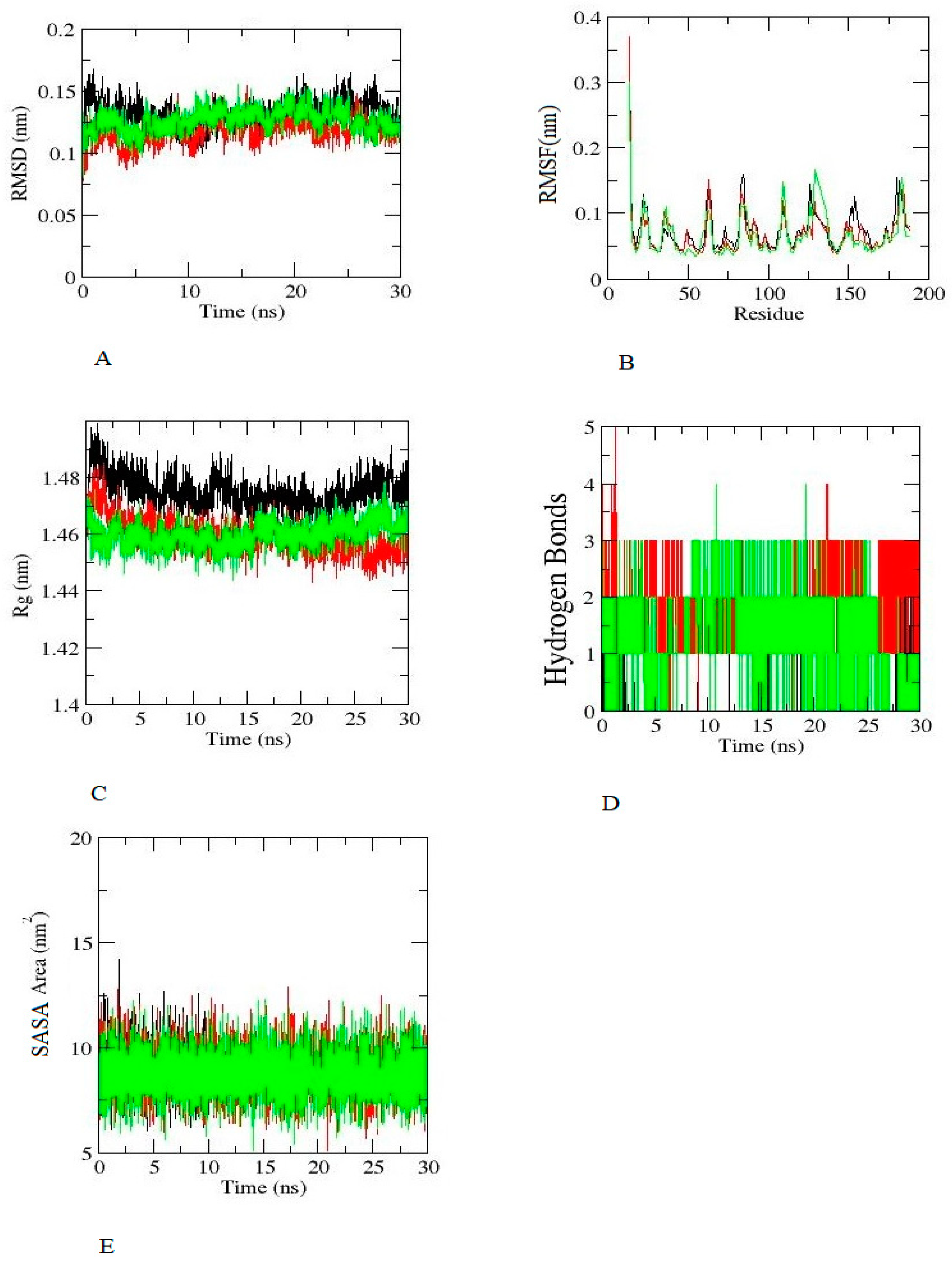
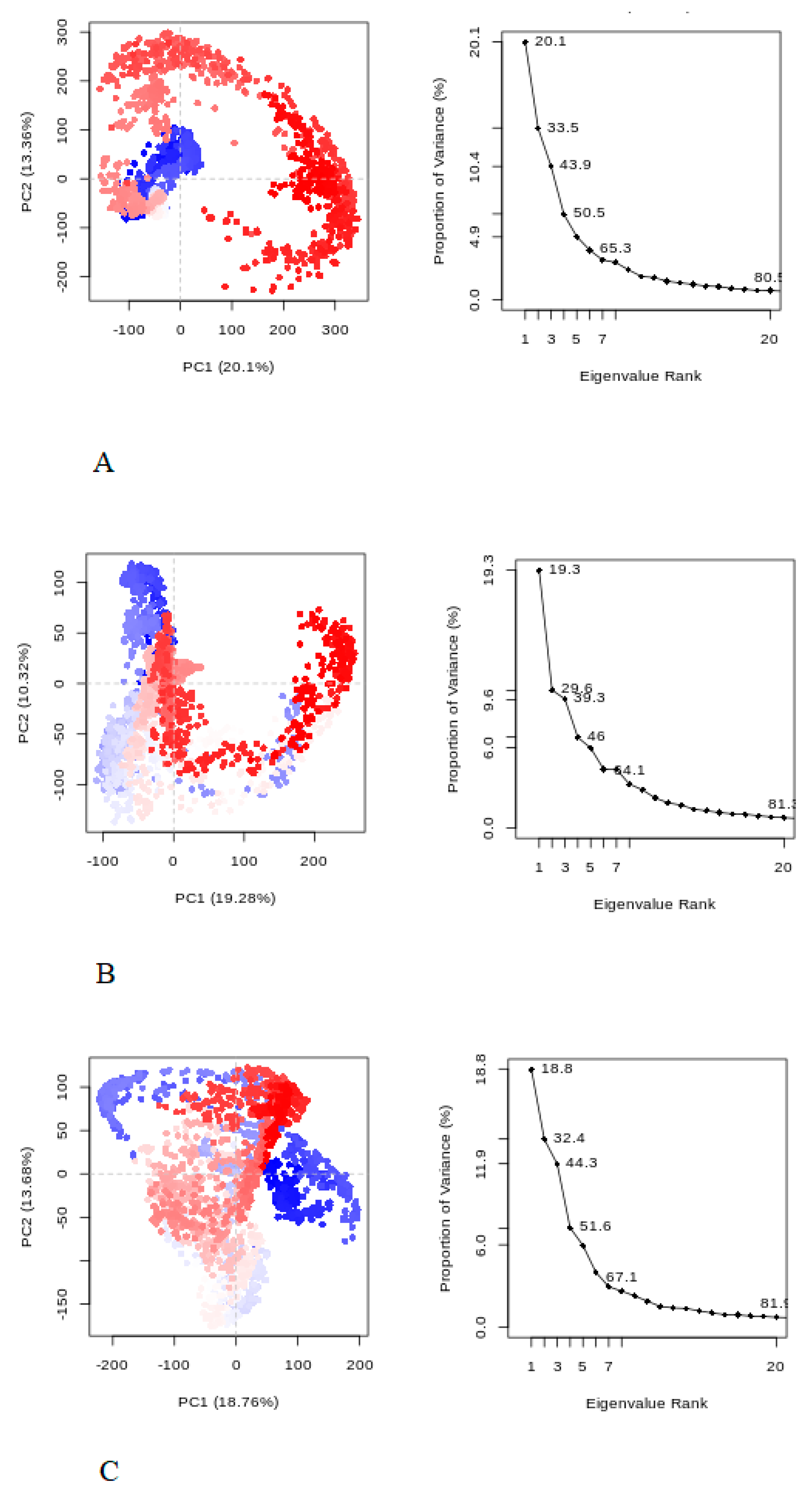
| Ligands | Amino Acid Residues Involved in Hydrogen Bonds | Docking Final Intermolecular Energy (ΔG) = vdW + Hbond + Desolv Energy (kcal/mol) | Inhibition Constant (Ki) | Protein |
|---|---|---|---|---|
| Hexaconazole | ASN 82 ASP 65 | −7.12 | 6.03 µM | 1D2S |
| Dihydrotestosterone | ASN 82 ASP 65 | −11.41 | 4.33 nM | |
| Aminoglutethimide | HIS 81 TRP 66 ASP 65 | −6.84 | 9.86 µM |
| Ligand–Hormone Complex | Binding Free Energy (ΔG) (kj/mol) | Van der Waals Energy (kj/mol) | Electrostatic Energy (kj/mol) |
|---|---|---|---|
| Hexaconazole + SHBG | −26.07 ± 1.5 | −40.33 ± 0.03 | −2.37 ± 0.9 |
| Dihydrotestosterone + SHBG | −30.96 ± 9.96 | −43.13 ± 0.02 | −23.45 ± 0.1 |
| Aminoglutethimide + SHBG | −22.66 ± 0.59 | −31.84 ± 0.08 | −8.90 ± 0.17 |
| SN | Paracetamol | Hexaconazole | Dihydrotestosterone | Aminoglutethimide |
|---|---|---|---|---|
| 1. | Hepatotoxicty | Yes | Yes | Yes |
| 2. | Thyroid receptors binding capacity | Yes | Yes | Yes |
| 3. | Plasma protein binding | Yes | Yes | Yes |
| 4. | Molecular weight | 314.21 g/mol | 290.45 g/mol | 232.28 g/mol |
| 5. | GI absorption | High | High | High |
| 6. | Log Kp (skin permeation) | −5.45 cm/s | −5.45 cm/s | −6.85 cm/s |
| 7. | Lipinski violation | No | No | No |
| 8. | Topological surface area | 50.94 A2 | 37.30 A2 | 72.19 A2 |
| 9. | Acute oral toxicity | Yes | Yes | Yes |
| 10. | Respiratory toxicity | Yes | Yes | Yes |
| System | Protein Residues | Water | Counter Ions | Total Atoms |
|---|---|---|---|---|
| Hexaconazole + SHBG | 2635 | 19,377 | 5 Na+ | 22,060 |
| Dihydrotestosterone + SHBG | 2635 | 19,377 | 5 Na+ | 22,068 |
| Aminoglutethimide + SHBG | 2635 | 19,368 | 5 Na+ | 22,039 |
Disclaimer/Publisher’s Note: The statements, opinions and data contained in all publications are solely those of the individual author(s) and contributor(s) and not of MDPI and/or the editor(s). MDPI and/or the editor(s) disclaim responsibility for any injury to people or property resulting from any ideas, methods, instructions or products referred to in the content. |
© 2023 by the author. Licensee MDPI, Basel, Switzerland. This article is an open access article distributed under the terms and conditions of the Creative Commons Attribution (CC BY) license (https://creativecommons.org/licenses/by/4.0/).
Share and Cite
Alquraini, A. Potency of Hexaconazole to Disrupt Endocrine Function with Sex Hormone-Binding Globulin. Int. J. Mol. Sci. 2023, 24, 3882. https://doi.org/10.3390/ijms24043882
Alquraini A. Potency of Hexaconazole to Disrupt Endocrine Function with Sex Hormone-Binding Globulin. International Journal of Molecular Sciences. 2023; 24(4):3882. https://doi.org/10.3390/ijms24043882
Chicago/Turabian StyleAlquraini, Ali. 2023. "Potency of Hexaconazole to Disrupt Endocrine Function with Sex Hormone-Binding Globulin" International Journal of Molecular Sciences 24, no. 4: 3882. https://doi.org/10.3390/ijms24043882
APA StyleAlquraini, A. (2023). Potency of Hexaconazole to Disrupt Endocrine Function with Sex Hormone-Binding Globulin. International Journal of Molecular Sciences, 24(4), 3882. https://doi.org/10.3390/ijms24043882





